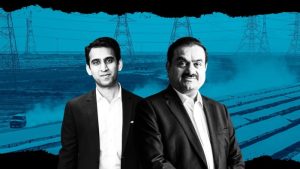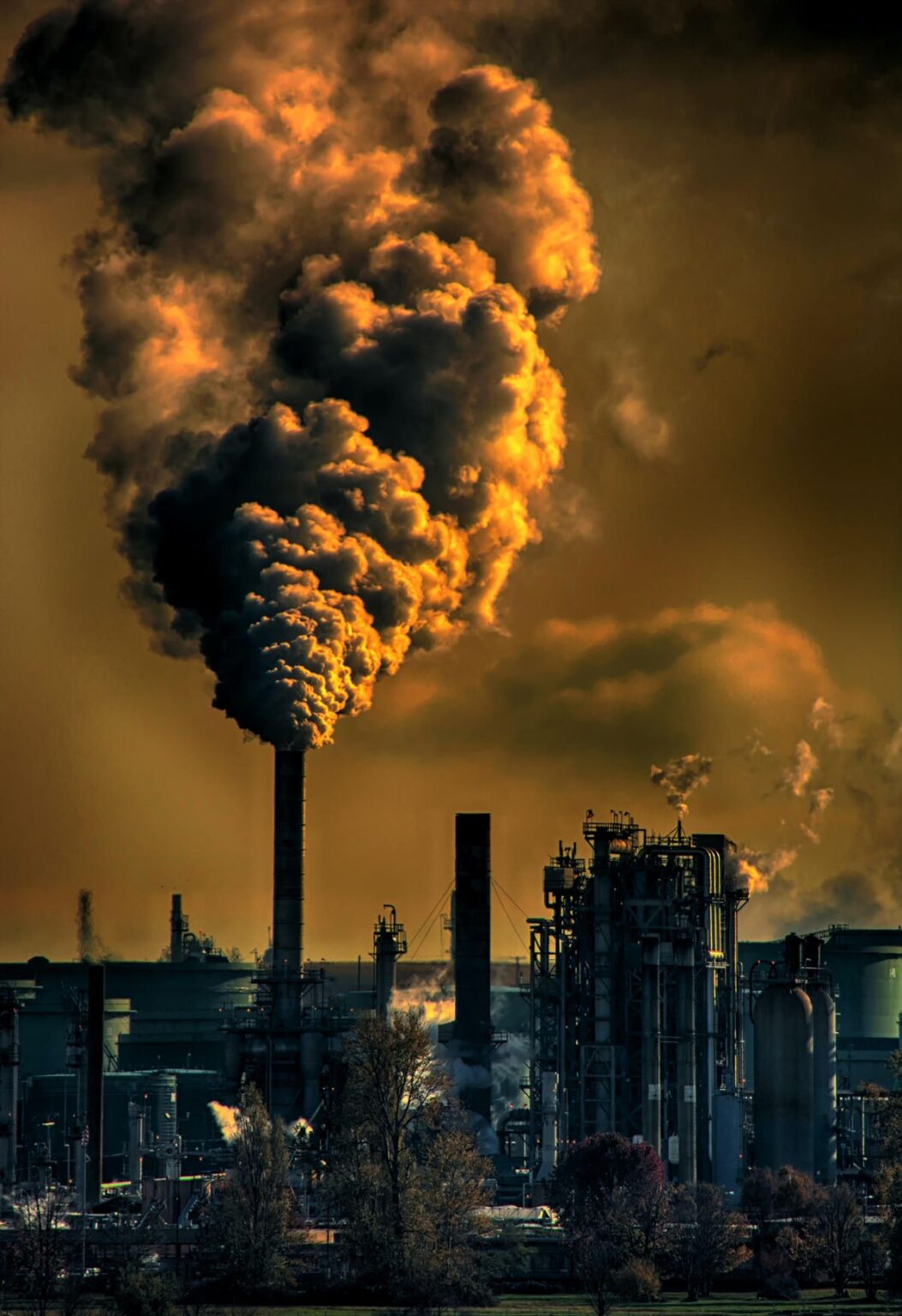At the end of World War II, the United States implemented the Marshall Plan, the biggest economic recovery act the world had ever seen and which was designed to get a war torn Europe back on its feet. Nearly a century later, as we experience the hottest summer on record and climate catastrophes around the world, is it time for a Green Marshall Plan for poor nations?
Recently I was excited to read about how various top government leaders from Brazilian President Luiz Inácio Lula da Silva to U.S. Treasury Secretary Janet Yellen insisted that now is the time to greatly expand the lending capacity of the International Monetary Fund, the World Bank and other development banks to finance such a Plan.
Rajiv Shah, president of Rockefeller Foundation, estimates that such a plan would cost at least 2% of the world’s GDP, or roughly $4 trillion annually until 2030 if we want to hit the climate goals set by the Paris climate accord. While this sum is extraordinary, it is on par to the 2% of GDP spent on the original Marshall Plan at the end of World War II.
But what a difference a near-century makes. With the U.S. no longer dominating the global economy, we need contributions from all parts of the world. Proponents of the Green Marshall Plan want the private sector to pick up the lion’s share of the tab.
Sounds great, right? As the Wall Street Journal reasons, if we want to expedite the developing world’s rise out of poverty and transition to cleaner sources of energy, we’ll need an enormous amount of foreign investment and aid on a scale not seen since the Marshall Plan. The linchpin of the idea is that government funds, specifically those coming from development banks around the world, can be used to catalyze private investment. These banks would bring the expertise and risk capital to finance projects in poorer nations that are deemed too risky from traditional capital markets forces.
Using capital effectively to catalyze more investment in climate solutions has been a cornerstone of my firm’s strategy. And, while all parties would love more capital, it’s not enough to truly solve this problem. Why?
Let’s look at three key headwinds:
(1) As existential as the threat of a global climate crisis is, it’s still less tangible than the detritus of a war-torn Europe. To some degree, this is about prevention rather than cleaning up after the fact.
(2) Perhaps more frighteningly, there are a number of factors working against private market participation in a Green Marshall Plan on such a massive scale. The political swirl surrounding green investment has intensified over the last few years in the U.S., and with an election cycle about to get into full swing, the political pushback on ESG investing is only likely to heat up.
(3) Most importantly, there may be a misunderstanding of the root causes that are holding back investment. Throwing more public money at the problem is not going to address the fundamental barriers.
As a result, it feels like everybody is standing on the edge of the pool to see who is going to jump in first.
If world leaders really want to catalyze private investment, they are going to have to do more than open up their checkbooks, they will have to do some much heavier lifting.
Ultimately, private investors need to make money. That’s the only thing that will motivate them. Blackrock is the world’s largest asset manager and perhaps the most influential voice on ESG matters in the U.S. thanks to Larry Fink’s annual letter. Look at what they said in their statement in response to this news: “[our role is] as a fiduciary to our clients and to help them navigate investment risks and opportunities, not to engineer a specific decarbonization outcome in the real economy.” Brrr – sounds like a pretty chilly endorsement to me.
Here are three ideas for world leaders to focus on that could really move the needle:
(1) Spend Political Capital to Incentivize Stability
It’s one thing for the world’s wealthiest nations to say they will spend some money, it’s another to tie that money to policy outcomes in high growth markets. Private investors view many of these markets as politically unstable and we know that today’s regulation could be tomorrow’s distant memory.
In my field of investing to fight plastic pollution, we’ve seen this all too often. For example, India’s plastic waste rules have evolved and changed maybe 10 times in the last 10 years. It has created exciting investment opportunities and also taken them away overnight. We are watching the next evolution of this in real time as the new plastic waste management rules come into effect, which will require minimum uses of recycled plastic in packaging, but nobody is certain how and when it will become a reality. And, at the international level, we expect the negotiations around the Global Plastic Treaty to have a chilling effect on national policies as policymakers wait to see how it evolves.
Spending political capital has trade-offs, of course, because you can only ask for so many things at once. What will fall off the agenda in order to make room for this?
(2) Direct Philanthropic and Development Dollars to Build the Pipeline
One of the biggest barriers to investing in these markets is that it is a lot of work and very expensive. Most investment opportunities need help to develop and become investment ready. It’s not like going to a FinTech conference and finding 100 startups ready to pitch you. You have to “work out the shoe leather” to find and prepare these projects. That costs money and institutional investors have other opportunities that don’t take as much work.
That’s where philanthropy and development funding can play a huge role. Take the USAID Clean Cities Blue Ocean (CCBO) program, for example, where they have blended their grant funding with Circulate Capital’s investments to accelerate impact and returns with Prevented Ocean Plastic Southeast Asia. Another great example is IFC’s Project Upstream, which seeks to combine the IFC’s role as bank and entrepreneur to bring private sector solutions and investment to address the world’s biggest development challenges.
(3) Back the Intermediary Market
There is a massive mismatch between the capital available and the investible opportunity set in high growth markets. The stage of development means that it is hard to find opportunities to invest large amounts of capital. It is much more realistic (not easy, but realistic) to invest tens of millions of dollars. But, if you want to invest a billion dollars, the opportunities are few and far between.
Since we are aiming to catalyze billions and trillions of dollars, it’s understandable that we are talking about the Blackrocks of the world. But, they are actually at the end of the pipe and not able to fill the gap.
Capital is a commodity. And we need tools and partners to move capital along the marketplace. More capital needs to flow to fill the “missing middle.” We need more funds of different sizes and funds-of-funds that are identifying and nurturing the growth stage opportunities to scale; that are willing and able to take the risk and enjoy the rewards of investing earlier and smaller. Only once the investment marketplace is healthy, will larger players get into the game.
Let’s be clear. The idea of catalytic capital is sound and welcomed when it comes to a Green Marshall Plan. On a much smaller scale, my firm is living proof that catalytic capital works and it works well. Early on in our own evolution as an asset manager, we recognized the value of catalytic capital that governments can provide to de-risk investments and, in so doing, attract the private sector to the table.
Back in 2019 we announced a partnership with USAID to provide a financial backstop to guarantee loans made by our firm to incentivize private capital investment and new business development in the recycling value chain in South and Southeast Asia. Thanks to this mechanism, we invested in Tridi Oasis, an Indonesian recycling SME in 2020 and two years later, the company was strong enough to join forces with ALBA Asia Plastics Recycling, a leading global recycling specialist and environmental services provider.
Part of the problem is that the Plan is missing the bigger opportunity. Instead of thinking about shifting risk full stop, it should think about sharing risk and expanding the pie. We all need to do things differently to meet the challenge.
We need a comprehensive plan to rally the resources needed to address climate change and all of the other enormous related environmental challenges like plastic waste that are endangering our planet. If governments do their parts to incentivize institutional investors, then they can do what they do best – invest in innovative, money-making ventures that can advance something as necessary and monumental as a Green Marshall Plan!
Read the full article here













